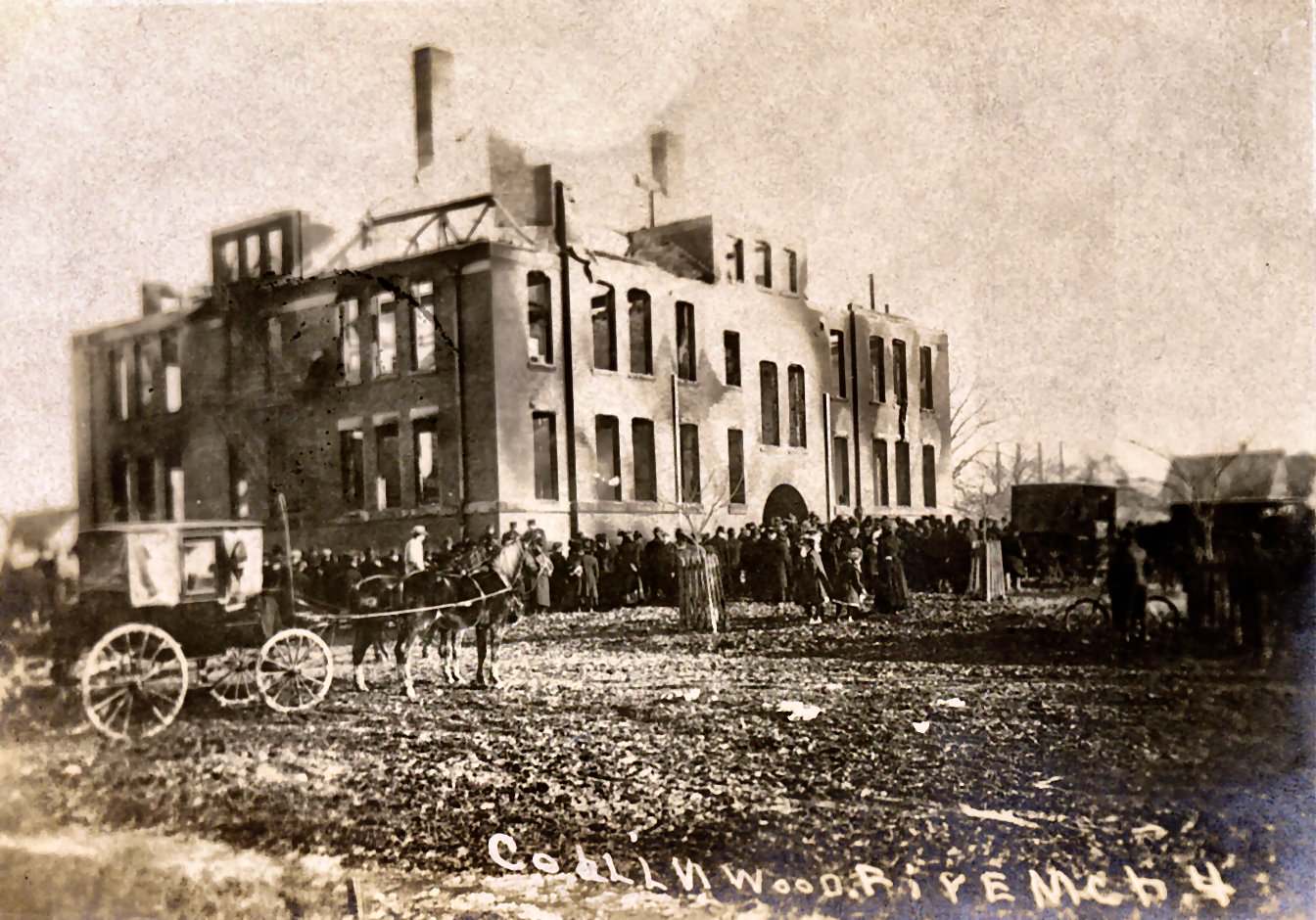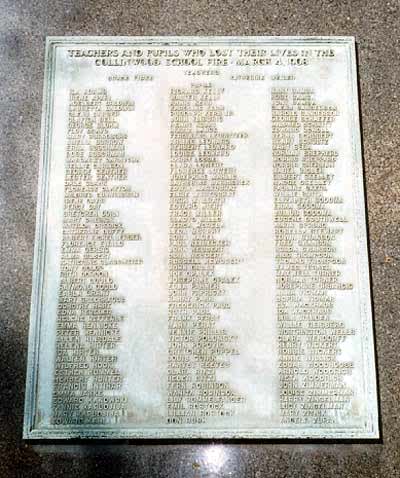

Once the first spark appeared that March morning in 1908--right around 9:30AM, when classrooms were full mid-session--fire spread and grew ferocious quite rapidly, thanks to a fire-friendly feature of the building's design. The Collinwood School had a wide central staircase that went straight up, from the first-floor entrance to the fourth floor. The reason you don't see this kind of staircase in large buildings anymore is that the airy stairway feeds oxygen directly to any fire, acting like the flue in a fireplace; with this type of long stairwell even a small fire will rage out of control in just a couple of minutes.
A large number of children died at their desks from asphyxiation as the building's oxygen was sucked out; they may not have known anything was wrong. The other, less fortunate students were left to die horrifically in the ensuing minutes. Thick, black smoke clogged the air and began to suffocate them. When panic took over, many were too disoriented to know which way to run. Some stumbled into the fire. More than 100 children reached the school's main entrance--only to find that the big double doors swung inward. The children of Collinwood died there, piled up and pressed against each other just behind the school's implacably sealed front doors.
There are accounts of helpless neighbors trying to reach the children as the building burned around them but finding it impossible to budge the doors from the outside. People claim to have seen students who ended up trapped on the third and fourth floors--the final victims, who managed to breathe oxygen through the windows only to literally catch fire and burn to death while would-be rescuers watched.
Much like New York City's Triangle Shirtwaist Co. in 1911 (146 dead), Chicago's Iroquois Theater in 1903 (602 dead), Boston's Cocoanut Grove nightclub in 1942 (492 dead), and Columbus's Ohio Penitentiary in 1930 (322 dead), the Collinwood fire changed the way schools are designed, constructed, and run. The central-staircase layout was scrapped entirely, modern fire alarm systems became a requirement, fire safety was widely taught and fire drills conducted regularly. The newly strengthened fire codes demanded multiple easily-accessed emergency exits (the Collinwood School had just one) and wider hallways. One- and two-story school buildings became the norm.
But when you visit a public school today the most direct legacy of the tragedy in Collinwood is the ubiquity of those wide crash-bar levers on the inside of every exterior door. Exterior doors which all open outward, it's worth noting.
The inferno that killed so many children that morning in 1908 gutted the entire building, resisting feeble attempts at putting it out. Ultimately the conflagration reduced it to a roofless, windowless husk--and burned the children's dead bodies horribly. Nineteen were utterly beyond identification and had to be placed in a single mass grave in Lake View Cemetery.



And the spot where the school stood is indicated by a simple plaque that lists the terrible facts of the tragedy. Ghosts are often said to inhabit the places where they died, particularly if they died early or in a horrible way. If that's the case, then the many reports of people seeing mysterious lights, smelling charred wood, and encountering odd, solemn schoolchildren in odd old-fashioned attire make a lot of sense. It's interesting to note that the awful details of the Collinwood fire seem to have been attributed to a legendary orphanage fire an entire county away--the notorious Gore Orphanage. Although spooky things are known to happen on Gore Orphanage Road in Vermilion, the legends about a deadly fire are completely untrue. Please e-mail me if you've ever had an encounter with the paranormal or unexplained at this sad spot on the west side of Cleveland.
Wikipedia: Collinwood School Fire